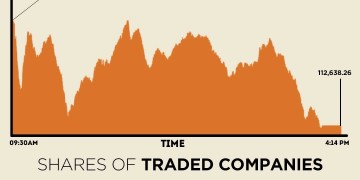By Henning Gloystein
SINGAPORE (Reuters) – Oil futures remained under pressure in early trading on Tuesday, following a slide that has seen prices fall by more than a quarter since the beginning of the year, as the full return of Iran to oil markets adds to an already huge supply overhang.
Oil prices had briefly stabilised in the previous session, but only after hitting the lowest since 2003 as western sanctions against Iran were lifted, allowing the country with the world’s fourth-largest oil and gas reserves to return in full to the market.
Prices came under pressure on Tuesday morning as Iran ordered a sharp increase in oil output to take immediate advantage of the lifting of sanctions.
“It is clear that investor sentiment is driving oil prices… Bearish bets are at their highest level since 1983, indicating heightened concerns around Iran oil flooding the market,” ANZ bank said on Tuesday.
Sanctions had cut Iran’s oil exports by about 2 million bpd since their pre-sanctions 2011 peak, to little more than 1 million bpd.
With the prospect of a lifting of sanctions becoming increasingly clear since the beginning of the year, a price rout that started in mid-2014 accelerated, pulling crude down over 70 percent in 18 months.
U.S. crude futures (CLc1) were trading at $ 29.00 a barrel by 0105 GMT, down 42 cents from their last settlement.
Front-month Brent crude futures (LCOc1), though up a notch just after opening Tuesday’s trade, remained below $ 29 per barrel at $ 28.69 per barrel.
“The run up to this weekend’s announcement has likely contributed to the recent decline in oil prices,” Goldman Sachs said.
“We have been assuming that production will rise by 285,000 barrels per day year-on-year in 2016,” it added.
Most traders expect Iran’s full return to oil markets to be relatively slow due to the need to overhaul its infrastructure, which is creaking from years of under investment under the sanctions.
But they also say that the initial ramp-up could be fast because of large amounts of oil Iran has stored for immediate sale. This is estimated at 12 million barrels of crude and 24 million barrels of condensates.
In OPEC-member Venezuela, there are signs that state-owned producer PDVSA is in dire straits over the oil price crash as it has requested partners to pay for naphtha imported to produce exportable crudes.
PDVSA is responsible for providing the naphtha, or light crude, needed to dilute the extra heavy oil produced at the Orinoco Belt, according to contracts signed with foreign partners including Chevron (CVX.N), Spain’s Repsol (REP.MC) and India’s ONGC (ONGC.NS).
In other oil news, Japan’s Cosmo Oil ordered a U.S. crude cargo, the first purchase by a Japanese buyer since the ending of a four-decade ban on most U.S. crude exports.
(Editing by Ed Davies)



























